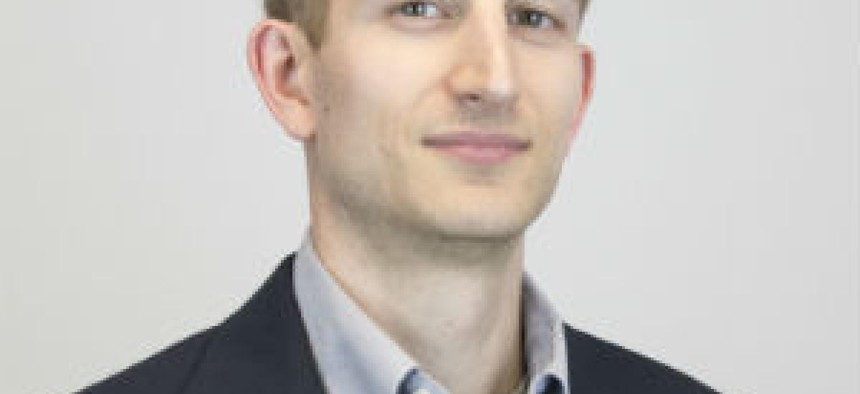Booz Allen takes on growth and the talent challenge

Booz Allen Hamilton's employee mix is shifting as the company moves deeper into its Vision 2020 strategy.
Booz Allen Hamilton has touted its need to hire talent to turn its contract bookings into long-term revenue growth but that also requires the right hires for its long-term vision.
Speaking on Booz Allen’s third quarter earnings call Monday, CEO Horacio Rozanski said the firm hired 522 additional staffers during the quarter ended Dec. 31. That represented a year-over-year increase of 7.4 percent, or 1,700 hires.
Rozanski further detailed the shift in employee skillsets as the McLean, Virginia.-based government services firm has sought a greater share of complex, highly-technical work with agencies to complement the contractor’s heritage consulting work.
The firm had 24,700 employees as of Dec. 31, according to its third quarter regulatory filing. About 52 percent of Booz Allen staffers “doing client work are technologists or sit in technology roles,” Rozanski said on the call.
That compares to 43 percent four years ago, shortly after Booz Allen’s initiation of its “Vision 2020” strategy centered on emerging technology areas such as digital services and cybersecurity, plus engineering and overall technical solutions.
Booz Allen’s overall talent base has grown 10 percent over four years, Rozanski said. Within that, he said the firm’s technical talent base is 34 percent bigger.
That technical talent base includes “a wide range of experts: from software architects to data scientists, from systems engineers to malware experts to life scientists,” he said.
For Booz Allen, this push to hire more staffers as its backlog grows and hence revenue has a circular effect on its business results. Rozanski said that shows in both its pipeline and awards, along with “better potential profitability in work we have won and proposals we are submitting.”
“The period of performance for submitted proposals has lengthened and the average (contract) value is increasing because we are going after larger awards and more complex work,” Rozanski said.
Some of that new focus also comes amid a change in buying behaviors by agencies. Price-sensitive contracts and particular low-price technically acceptable awards have not gone away but the complex work Booz Allen eyes has seen a shift away from LPTA, he said.
What kinds of complex work does Booz Allen eye? Rozanski cited a move by agencies to move resources into cloud computing environments and realize “operational, economic and security imperatives.”
The firm’s main pursuits also include agency efforts “to reach the digital consumer, anticipate and fend off cyber attacks on infrastructure, connect and train troops deployed across the globe using virtual reality, apply machine learning to accelerate analysis, intelligence and kinetic response and so forth,” Rozanski said.
That push to hire and add more technical talent in particular continues to create near-term profitability headwinds for Booz Allen.
Chief Financial Officer Lloyd Howell told analysts on the call Booz Allen expects to incur $5 million in additional costs for its current 2018 fiscal year ending March 31. Those costs reflect “the larger volume of new hires this year and the time it’s taking to get them fully billable,” Howell said.
That factors into Booz Allen’s expectation of a 9.2-9.4 percent margin for adjusted earnings before interest, taxes depreciation and amortization. Investors watch adjusted EBITDA margin as a key profitability metric for government services companies. The firm reported a 9.4 percent adjusted EBITDA margin last fiscal year.
Those margin headwinds also factor in $8 million in legal expenses over three quarters partially related to the Justice Department’s current civil and criminal investigation into Booz Allen, which executives had no updates on during the call.
The firm was also the latest government services company to report its new tax outlook in the wake of the massive reform legislation’s enactment in December. Booz Allen is forecasting a new effective tax rate of 25-27 percent for future fiscal years versus the previous 37-38 percent. For this fiscal year, the effective tax rate should come in at 33-34 percent.
Third quarter revenue of $1.5 billion was 6.8 percent higher than the same period last year but short of the $1.52 billion consensus analyst outlook, while earnings of 48 cents per share topped the Wall Street forecast of 43 cents EPS. Lower taxes helped drive the earnings beat.
